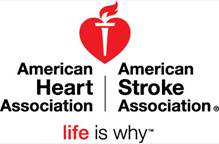Living Well With Technology

By Dr. Eduardo Sanchez, Chief Medical Officer of Prevention
American Heart Association
Life is why.
The American Heart Association’s tagline is “Life is why”, but, it’s not just about living, it’s about living well. Heart disease and stroke, the nation’s number one and number five killers, are robbing us of healthy livingat an unacceptable rate. However, if we can reach age 50 in ideal cardiovascular health, we can live another 30 to 40 years free from heart disease and stroke. That’s living well.
And Life’s Simple 7 can get us there. The American Heart Association defines “ideal” cardiovascular health using seven easy-to-understand measures called Life’s Simple 7: not smoking, eating healthily, engaging in regular physical activity level, healthy weight, blood pressure, blood cholesterol, and blood glucose. Even small improvements in these seven measures benefit overall health.
What’s more, following the science-based Life’s Simple 7, a person can reduce his or her risk of heart attack, stroke, diabetes, cancer, stress and depression. Improving heart, brain and vascular health improves overall health.
An encouraging scientific statement from the American Heart Association, published in the association’s journal Circulation, indicates that mobile technologies may help people improve health behaviors. In fact, preliminary data suggest that wearable sensors are promising for improving cardiovascular health behaviors and that this type of self-monitoring is a key component to changing behavior to improve health and prevent heart disease. Currently, 20% of American adults use some technology to track health data.
And while there is currently limited scientific evidence on the effectiveness for mobile health technologies in reducing risk factors for heart disease and stroke, the ability to influence smoking cessation, physical activity, and healthy eating are all key to achieving ideal cardiovascular health and modifying those risk behaviors associated with Life’s Simple 7. My Life Check® is an online risk assessment tool based on the science of Life’s Simple 7 that allows users to receive an initial heart health score and receive individually tailored health information to improve their heart health.
The benefits of regular physical activity are well known, however, roughly one in four adults currently meet the recommended weekly levels of 150 minutes of moderate activity (brisk walking or slow bicycling) or 75 minutes of vigorous activity (jogging, running, or fast bicycling). Furthermore, workers are significantly more sedentary than their peers were in the 1950s, as agricultural jobs steadily declined while service jobs increased. Today, 69% of U.S. adults are overweight or obese.
The health and economic consequences of the obesity epidemic are sobering, however, we can all strive to make small, consistent changes. Moving for just 30 minutes a day can change your life for the better. Self-monitoring using a wearable may be a helpful strategy to set realistic health goals and track improvement towards that goal. Making small, consistent changes can lead to meaningful change over time and help us all live well.
Life is why.
The post Living Well With Technology appeared first on Garmin Blog.
Sample Block Quote
Praesent vestibulum congue tellus at fringilla. Curabitur vitae semper sem, eu convallis est. Cras felis nunc commodo loremous convallis vitae interdum non nisl. Maecenas ac est sit amet augue pharetra convallis nec danos.
Sample Paragraph Text
Praesent vestibulum congue tellus at fringilla. Curabitur vitae semper sem, eu convallis est. Cras felis nunc commodo eu convallis vitae interdum non nisl. Maecenas ac est sit amet augue pharetra convallis nec danos dui.
Cras suscipit quam et turpis eleifend vitae malesuada magna congue. Damus id ullamcorper neque. Sed vitae mi a mi pretium aliquet ac sed elitos. Pellentesque nulla eros accumsan quis justo at tincidunt lobortis denimes loremous. Suspendisse vestibulum lectus in lectus volutpat, ut dapibus purus pulvinar. Vestibulum sit amet auctor ipsum.

